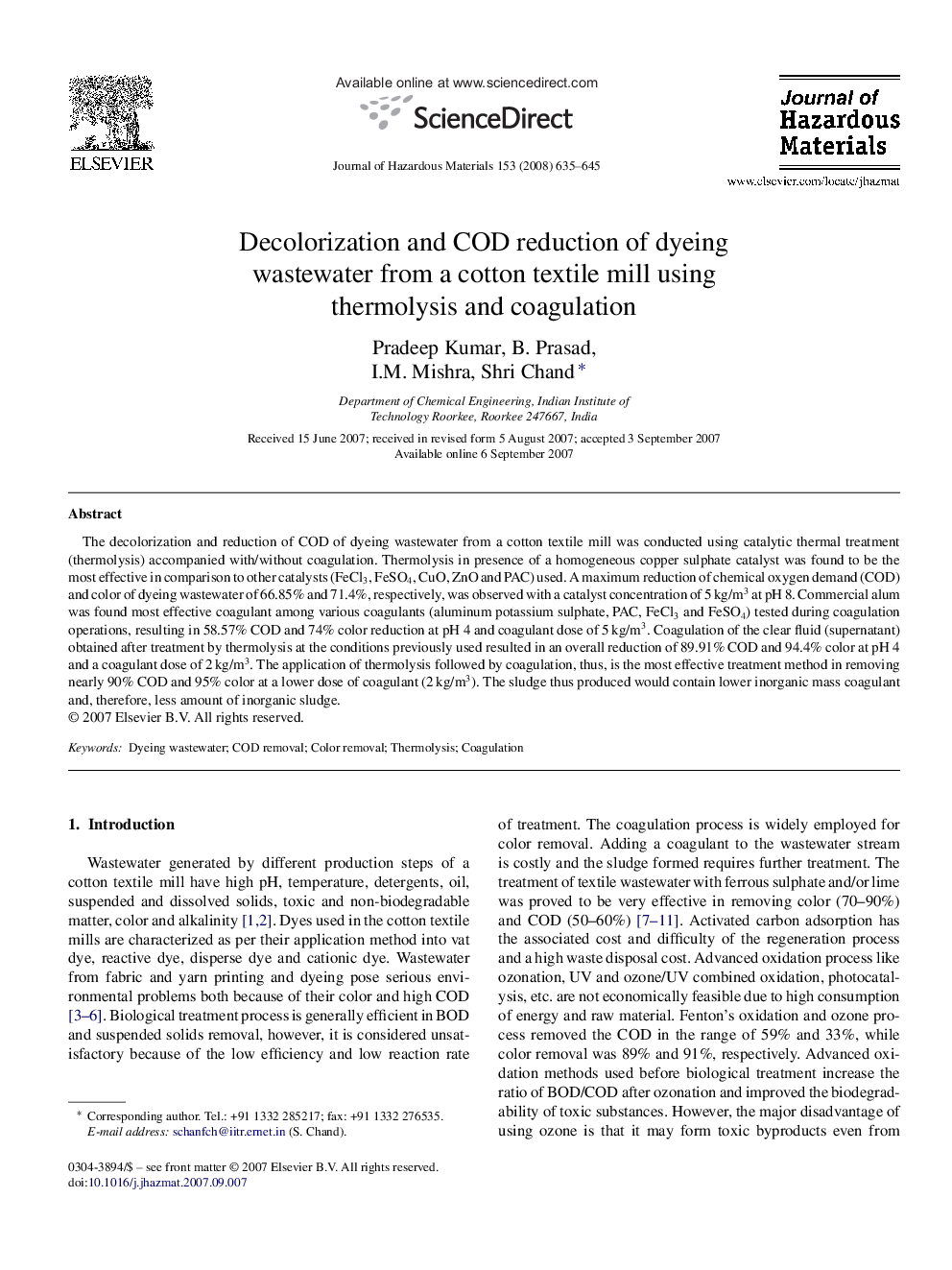| کد مقاله | کد نشریه | سال انتشار | مقاله انگلیسی | نسخه تمام متن |
|---|---|---|---|---|
| 583152 | 1453175 | 2008 | 11 صفحه PDF | دانلود رایگان |
عنوان انگلیسی مقاله ISI
Decolorization and COD reduction of dyeing wastewater from a cotton textile mill using thermolysis and coagulation
دانلود مقاله + سفارش ترجمه
دانلود مقاله ISI انگلیسی
رایگان برای ایرانیان
کلمات کلیدی
موضوعات مرتبط
مهندسی و علوم پایه
مهندسی شیمی
بهداشت و امنیت شیمی
پیش نمایش صفحه اول مقاله

چکیده انگلیسی
The decolorization and reduction of COD of dyeing wastewater from a cotton textile mill was conducted using catalytic thermal treatment (thermolysis) accompanied with/without coagulation. Thermolysis in presence of a homogeneous copper sulphate catalyst was found to be the most effective in comparison to other catalysts (FeCl3, FeSO4, CuO, ZnO and PAC) used. A maximum reduction of chemical oxygen demand (COD) and color of dyeing wastewater of 66.85% and 71.4%, respectively, was observed with a catalyst concentration of 5Â kg/m3 at pH 8. Commercial alum was found most effective coagulant among various coagulants (aluminum potassium sulphate, PAC, FeCl3 and FeSO4) tested during coagulation operations, resulting in 58.57% COD and 74% color reduction at pH 4 and coagulant dose of 5Â kg/m3. Coagulation of the clear fluid (supernatant) obtained after treatment by thermolysis at the conditions previously used resulted in an overall reduction of 89.91% COD and 94.4% color at pH 4 and a coagulant dose of 2Â kg/m3. The application of thermolysis followed by coagulation, thus, is the most effective treatment method in removing nearly 90% COD and 95% color at a lower dose of coagulant (2Â kg/m3). The sludge thus produced would contain lower inorganic mass coagulant and, therefore, less amount of inorganic sludge.
ناشر
Database: Elsevier - ScienceDirect (ساینس دایرکت)
Journal: Journal of Hazardous Materials - Volume 153, Issues 1â2, 1 May 2008, Pages 635-645
Journal: Journal of Hazardous Materials - Volume 153, Issues 1â2, 1 May 2008, Pages 635-645
نویسندگان
Pradeep Kumar, B. Prasad, I.M. Mishra, Shri Chand,